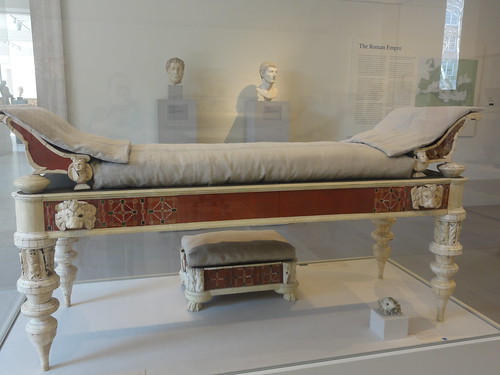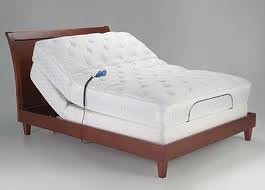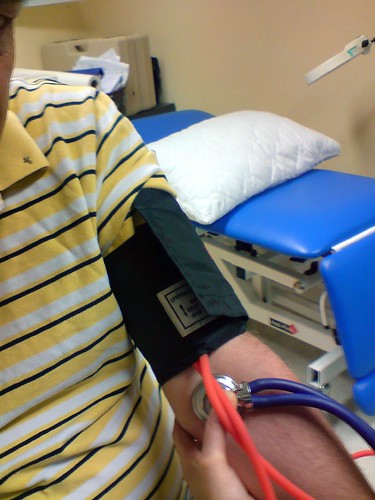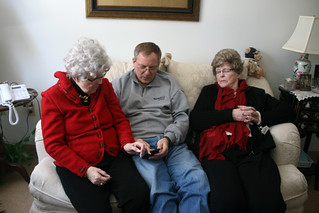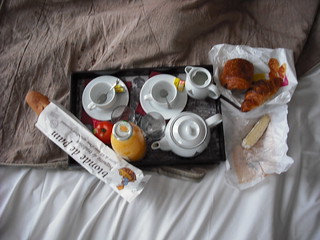 |
| Image Courtesy of www.fotodiscs4u.co.uk |
Currently, the highly contentious plan is to move out of the Civic Centre, alongside the King’s Hall and the Minster Church of St Peter’s, in Stoke to a new centre to be built ‘up anley, Duck’. Stoke on Trent has its own unique accent and dialect which marks out North Staffordshire folk around the world. If you complain about the cold when it is ‘slatting dain’ or raining heavily. you are said to be ‘nesh’ In actual fact, to ‘go up’ to Hanley is correct as one goes ‘up’ to the primary centre. Regardless of geographical location, one always goes ‘up to London’; certainly never ‘down’ to the Capitol.
 |
| Image: Wikipedia - Lionel Allorge |
The local football team, known as ‘The Potters’ was for a time home to many football legends such as Terry Conroy, Gordon Banks and Sir Stanley Matthews and today his statue stands in Hanley as a tribute to that sporting era.
Alongside the traditional ceramics industry, the area produced coal on a large scale and iron and steel at the Shelton Bar works. The Potteries towns of today have suffered much dereliction and lack of employment. The pottery industry has all but gone. Gone also are the mines, the steelworks and most of the engineering. What was once a proud region, with traditional skills, is now an area desperately in need of regeneration. The heart of the industry has gone, probably for ever, but the spirit of pride and friendliness of Potteries folk remains.
It has to be said that one blessing of the city, formed out of the six towns, not five as immortalised by Arnold Bennett’s ‘Anna of the Five Towns’ is that it forms a ribbon development along the valley of the River Trent. One is very quickly out of it. North Staffordshire is a very lovely area. Bordering on to the Staffordshire Moorlands, one is soon into Derbyshire and the Peak District National Park. This region is as attractive as anywhere else in Britain.
Some of the spirit of The Potteries is recorded in literature. Arnold Bennett was born in Hanley in 1867 and died in 1931. His father was a solicitor and his son, having been educated in Newcastle- under-Lyme, read law and became a solicitor’s clerk in London.
Newcastle is not a part of Stoke-on-Trent and to this day, the folk of ‘Castle’ guard that distinction as a Loyal and Ancient Borough and a part of the Duchy of Lancaster. The Marsh, a lovely open area between May Bank and Wolstanton is still preserved as a local amenity by the Duchy. Running north to south, the towns are Tunstall, Burslem. Hanley, Stoke, Fenton and Longton. In ‘Anna’, the names are altered to Turnhill, Bursley, Hanbridge, Knype, The Forgotten Town (Fenton) and Longton. Bennett became a prolific writer. On his own admission, his motivation was to maximise his income rather than creative activity.
‘Am I to sit still and see other fellows pocketing two guineas a piece for stories which I can do better myself? Not me. If anyone imagines my sole aim is art for art’s sake, they are cruelly deceived.’
(Arnold Bennett)
Bennett presents a bleak image of Tunstall (Turnhill). “It was the winter of 1835, January. They passed through the marketplace of the town of Turnhill, where they lived. Turnhill lies a couple of miles north of Bursley. On one side the marketplace was barricaded with stacks of coal and the other with loaves of a species of rye and straw bread. This coal and these loaves were being served out by meticulous and haughty officials, all invisibly braided with red-tape, to a crowd of shivering, moaning and weeping wretches, men women and children – the basis of the population of Turnhill.”
The population of Tunstall today as they use Tunstall Market, deserve a much more flattering description. The most northerly of the towns has a fascinating history which is well worth investigating.
A brief history of Tunstall
The story of Tunstall has its roots in antiquity. There is evidence that as far back as 1280 iron was being produced in the town. Tile and brick making sites possibly date back to the late Middle Ages. The ancient name of ‘Sneyd’ seen in Sneyd Green and a number of well known Sneyd Arms pubs, gives us a link to the Lord of the Manor, one Walter Sneyd Esq. The Sneyd family, dating back to the 13th century, went on to have much influence in this area. A letter from one ‘Harry Delves’ (probably Sir Henry Delves of Doddington) to Richard Sneyd (d.1537) concerns buying land in Keele. In 1542 William Sneyd bought the Keele estate and it was to remain in the family for some four hundred years. The first Keele Hall was built by Ralph Sneyd (son of William) in 1580. Today, other than a quarry and some very old trees nothing remains of his Tudor style creation. During the Civil War, the Sneyds were on the side of the King, which, in what was a strong Parliamentary region, was a dangerous side to follow. Col Sneyd was killed by Parliamentary soldiers. The current Keele Hall was built in mock Jacobean style in 1851. During the second world war, the hall was requisitioned by the army. After the war, the estate was purchased from Ralph Sneyd in 1948 to become the University of North Staffordshire, which became the University of Keele in 1962.
So much for the Tunstall connection with Keele and the Sneyd family. There is an interesting reference to Tunstall in a journal of 1828 ‘Tunstall is a considerable village within the township of Wolstanton Court, a liberty in the parish of Wolstanton, four miles from Newcastle, pleasantly situated on an eminence, deriving its name from the Saxon word tun or ton, a town, and stall, an elevated place, seat or station.
In this township abounds coal, ironstone, marl and fine channel coal; and the manufactories of earthenware are very extensive here.’
The ‘eminince’ or ‘elevated place’ refers to the ridge on which the site of Tunstall stands between Fowlea Brook to the west and Scotia Brook to the east.
Pottery Makers
In its heyday, Tunstall had nearly one hundred pot banks. Among the more famed were William Adams & Co, R Beswick, Grindley Hotel Ware Ltd., Booths, W H Grindley & Co Ltd., Johnson Brothers Ltd., Alfred Meakin (Tunstall) Ltd., and Enoch Wedgwood & Co Ltd. Just one example of the importance of pottery manufacturing in Tunstall is that in 1977, Alfred Meakin’s alone employed 2000 local people. Up to the late 1990’s most pottery used around the world was made in Stoke-on-Trent. Some 70,000 or so people were employed in the ceramic industry. The drift of pottery manufacturing eastwards resulted is the figure dropping to just 6000. Which son or daughter of the Potteries could have predicted that an iconic brand such as Wedgwood would go into liquidation but it did in 2009. Other closures followed including Royal Doulton. Only twenty years ago there were some three hundred companies making pottery. Today the figure is more like fifteen. The smoke and the bottle ovens, akin to a Lowry landscape, have gone but pride and self-respect have gone also. The once proud and skilled potters have been replaced by I.T. companies, distribution centres and on line gambling. The ‘High Street’ is now the domain of closed shops and boarded up pubs, banks and charity shops, as unemployment and on-line internet shopping have changed our towns, probably for ever.
It is not all gloom and doom. Tunstall is the location of the highly successful ‘Churchill China’, based in Malborough Way. The company has its beginnings in 1795, later comprising a number of small family firms. The name ‘Churchill’ was adopted in 1928. Today it is largely owned by the Roper family. My father was a salesman for the family company when it was known as ‘James Broadhurst’s’ based in Fenton.(Sorry Arnold Bennett but yes, Fenton does exist). Churchill China is based on family values and is a leading innovator of ‘green technology’ in the industry. 90% of Churchill’s products are made in the UK.
Tunstall’s architecture
The Town is really one urban street, along which are some impressive architectural structures, with the exceptions of the iconic bottle ovens, of which, sadly, there are no remaining examples. Tunstall has some interesting historical places of worship. Stoke-on-Trent has a strong Methodist tradition. John Wesley the father of Methodism, famously preached at Mow Cop which could claim to be the origin of the Wesleyian Methodist Church. There were no churches in Mow Cop and Wesley preached in the open. Wesley, an Anglican, formed the Methodist Church as he felt that the established church had lost empathy with ordinary working people. After his death in 1791, as is often the case, infighting and reform were to follow. The Methodists were ‘staying in their churches’ and some felt that Wesley’s way had been lost. A reformed body was to be established, Primitive Methodism. The ‘Prims’ as they became known locally were formed by Hugh Bourne (1772-1852) and William Clowes (1780-1851). The first Primitive Methodist Chapel was built by Hugh Bourne in Tunstall in 1811. Bourne was nothing if not prudent. He designed his chapel in the form of a row of houses. It had no dividing walls and only one entrance. In the event of the failure of the new movement, all would not be lost and the chapel could be converted into dwellings and sold off! Bourne need not have worried as the new brand of Methodism became very popular with the Potteries working classes. The small chapel could not accommodate growing congregations and it was rebuilt on a larger scale, opening ion 1860 as the great ‘cathedral’ of Primitive Methodism – Jubilee Chapel, Tunstall.
The Roman Catholic Church
 |
| Image Copyright castlecomfortcentre.com |
The Anglican building, Christ Church Tunstall, by Francis Bedford, with extensions by A.R.Wood is by comparison an unimposing edifice built in the 1832 under the patronage of Ralph Sneyd Esq. at a cost of £400 for the site alone.The growing population during the 19th century, required the need for a Church in Tunstall. Church of England worshippers had to travel in all weathers and on poor roads to the mother church, St Margaret’s Wolstanton. In 1738 Tunstall had a population of a mere 200. By 1838 this figure had risen to a staggering 6,608 living in some 1,400 houses. An Act was passed for the building of churches in ‘highly populated areas’ and in 1829 the people of Tunstall filed an application. Christ Church was built at a cost of £3,146. Of this figure £1000 was raised by local people and the Church Commissioners paid the rest. Such were these the days of faith that it was thought necessary to build a church which would accommodate 1000 people!
 |
| Image Copyright castlecomfortcentre.com |
Tower Square and Clock Tower Tower Square, across the road from the Town Hall, is a pleasing central point in Tunstall with its shops and imposing clock tower. The tower built in a yellowish brick, was erected in 1893. The tower is a memorial to an influential family, the Smith Childs. Admiral Smith Child RN had a distinguished naval career. He served in the Seven Years War, the American War of Independence and the French Revolutionary Wars. His has a direct link to Tunstall in that he founded a pottery factory there in 1793 and took an interest in the town’s affairs. He died in 1813 and is buried at St. Margaret’s Church Wolstanton. He outlived his son by two years, and as a result, he left his estate to his grandson who became Sir Smith Child, Bart. Smith Child was born in Tunstall. Sir Smith Child and his wife Sarah who lived in Fulford, married in January 1835. The family lived in Stallington Hall. In addition to business interests, Smith Child was a politician and between 1851 and 1859 was MP for North Staffordshire. The Child’s were local philanthropists and gave financial support to the area. As well as his local church in Fulford and Fulford School, Smith Child was a supporter of the North Staffs Infirmary Building Fund. Smith and Sarah are buried at St. Nicholas Church, Fulford. Their grandson moved to London to take up a post working for the King. The family philanthropic spirit had been passed down and the family were much missed by the local poor to whom they had generously given help in the form of coal, soup, flannel and blankets.
Some famous Tunstall
Folk
Clarice Cliff Potter
Susie Cooper Potter
Alan Lake Married
to Diana Dors
Hugh Dancy Actor
–‘Black Hawk Down’
Neil Morrissey Actor – ‘Men
Behaving Badly’
Anthea Turner TV presenter –
Blue Peter
Nick Hancock TV –
Chairman ‘They Think its All Over’
Legendary Lonni Rockstar - candidate for Monster Raving Loony Party
Robbie Williams Mega Pop Star –
some songs refer to Stoke-on-TrentHistorical facts are both fascinating and important when looking at any area. There is no shortage of the availability of such information. What is more poignant is to talk to people who actually experienced first hand the life of a village or town.
(The writer is indebted to Mr David J McFarlane who agreed to share his memories of growing up in Tunstall.)
Mr David McFarlane was born in 1933 and grew up in Tunstall. I am pleased to pass on some of his personal recollections.
“I loved growing up in Tunstall. It was a vibrant, colourful place and the people were a friendly mix of equally colourful characters; a cross section of all of the social classes. For many, life was not easy, but there was a pride and sense of community in Tunstall. I lived in the town centre, finally on a corner plot opposite to the Catholic Church and opposite the park which was, and still is a lovely amenity for local folk. I spent many happy hours playing there. There was really no fear for children’s safety in those days.
My family were Methodists and in those days, people tended to treat Catholics with a degree of suspicion. The Sacred Heart Church was the inspiration of one Father Ryan. He served all of the people, regardless of their faith, and was a highly respected character in Tunstall.
Unemployment was a problem then, not just a modern day issue. In those days it was common to see a group of men outside the Town Hall looking for work and hoping that a pot bank or the railway boss would hire them, albeit just for a casual day or two. Such as things were, there were always the unsuccessful who would be left to share their disappointment and hope for a miracle. This was a Godsend (perhaps literally) for Fr. Ryan who coerced them to follow him and provide ‘volunteer’ labour on the church building site. It did not provide a pay-packet but perhaps it was ‘good for the soul’!
I remember seeing the large number of people who came out of the church every Sunday after the Latin mass; a crowd which greatly outnumbered those I saw at our Methodist chapel anyway, and more akin to a football match!
The size of the congregation was a cause for amazement for one bystander who said to my father, “How do they get so many when the service is in Latin? There’s only one man understands a word of it and he’s Mason, the chemist!”
I can’t remember the date, but it was in 1951 that Tunstall centre and the surrounding area came to a standstill. Buses, vans and cars were going nowhere, it was gridlock. The cause was the funeral cortège for Fr. Ryan. Such was his popularity.
The new Town Hall, facing the Market Square, was a lovely building then and was a proud edifice, the back being attached to a popular covered market, opened in 1885, but it fell into disrepair as Stoke and Hanley became the centre of administration. After some restoration work, the market has reopened and it is now a very lively trading post and meeting place.
At the top of the Market Square stands the clock tower, built in 1893. It was always useful to glance across at the clock as people went about their business in the town. In its heyday, the square was a colourful lively place being the terminus for some ten or twelve privately bus companies, all with their own distinctive liveries and privately owned. I always loved trains and buses and to visit the square was a bus-spotters paradise. I can still remember the colours of each company.
PMT Red with a cream stripe
BROWNS Fawn and white – At the end of the war, they added a red white and blue Stripe to celebrate victory
ROWBOTHAMS Blue cream and red
WELLS Apple green with a grey stripe
RELIANCE Light green and cream stripe
TILSTONES White with marone stripes
ABC MOTORS Maroon with red stripes
STANIERS Red with maroon stripe
A PMT stopped by the park to unload black-faced men – no pit head baths in those days!
Tunstall station was on the railway loop line which went all round the Potteries. Cobridge tunnel was very low, and some engines had to stop and remove a high funnel before going through, similar to the working narrow boats on low bridges on the Trent and Mersey canal. The railways carried goods as well as people. A familiar noise and sight was that of large wooden barrels, full of straw packed pots from the Adams’ factory being rolled by hand to the station along Furlong Road and Station Road, later to be renamed The Boulevard.
I remember going down to the bottom of Tunstall Park to where the ‘mineral line’ ran to and from Chatterley Whitfield colliery. I think this was called Sytch Sidings. I had my own Thomas the Tank Engine’ The line had its own fleet of little tank engines and like the buses, I recall not only their colours but also their names.
‘Edward V11’, ‘Minnie’ , ‘Katty’, ‘Rodger’ and the posh sounding ‘Earl of Granville’.
The Fire Station was a strange building. It was located on the High Street but you could easily miss it. It had a single shop front style entrance which was just wide enough to take a fire engine with just a few inches to spare! Very odd really.
Thinking back to Tower or Market Square, the following shops were there in the early 1940’s.
Left side
BOOTS CHEMIST with a
library on the 1st floor
HAMPSON’S RADIO &
ELECTRICAL (no TV then)
GREENHALLS DRY
CLEANERS
HOME & COLONIAL
GROCERS (with saw dust on the floor!)
HINCHCO CHEMISTS (Mr
Hincho sported a waxed moustache and wore winged collars)
MELIA’S GROCERS
MIDDLEBROOKES
HABADASHERY (My mother was a Milliner and bought fabrics there)
Right side
WINE SHOP
WRIGHT’S PIE SHOP
BOURNES CYCLE SHOP
CO-OP EMPORIUM
SNEYD ARMS Around the corner from the Town Hall was a public library in what was the Victoria Institute and Public Swimming Baths, built in 1889. In 1901 a local ironmonger, W M Durose, made a wrought iron sign which hung on the side of the building. He also made the gates to Tunstall Park, a masterpiece of his skills, which still survive today. The baker was in fact Mr Baker! These were the days of post war rationing and things were short. People used to take their meagre ingredients to him and he would do the baking for them. I think they met at the Church Hall in Stanley Street.
Amongst the ‘characters’ I remember, and about whom my father would often speak, was "Alderman George Herbert Barber.”
George Barber didn’t have an auspicious start in life. He was born in 1860 and died in 1946. When he was about seven, his mother passed away. His father was evidently an ill man and unable to look after him. The young lad was placed in Chell Workhouse. Deprived of a formal education, George taught himself what we used to call the 3Rs. Another example of his character was that he taught himself to play the accordion. He would go around the Tunstall pubs entertaining the customers. In his autobiography “From Workhouse to Lord Mayor” he tells how he became a farm labourer and finally a miner. He was drawn to Methodism and developed a social conscience, perhaps based on the experience of his childhood. He assisted miner’s families during the strikes in the last two decades of the 19th century. He relates witnessing women begging for food to feed the family while husbands drank in the pubs. Drunkenness was rife and he refers to what he called ‘the ally of poverty’ in Tunstall in those days. These experiences led him to join the Temperance Movement. He had a fascination with film and photography. An example of an early use of ‘media’ is when he would give lectures on the perils of drink, all illustrated by slides in a ‘Magic Lantern’ show!
You know, I remember him as a Sunday School teacher. He used to tell us about the Holy Land and show slides of the places in the Bible. It was a fascinating novelty to us – no TV or tablets then of course. He somehow managed to feature in many of them, saying things like “This is where Jesus was born and that’s me on the left!
His interest and ingenuity lead to him opening the first ‘picture house’ (cinema) in Tunstall in 1909 – ‘Barber’s Picture Palace’. He must have had a good business sense and within just ten years he owned a chain of cinemas throughout the Potteries and some in Buckinghamshire.
He was elected as a Labour Councillor and became the first Labour Mayor of Stoke-on-Trent in 1929. Amongst his philanthropic projects were the North Staffs Royal Infirmary and The Haywood Hospital. “He certainly was a character. I can tell two stories which my father used to tell about Alderman Barber. I don’t know how true they are as they have been passed down the generations, but they are a wonderful insight of the man. One concerns ‘Barbers Palace’ and the old silent film shows accompanied by a pianist. Some of the early cinemas were referred to as ‘The Bug Hut’. The story goes that before the evening showing began, he would interrupt the pianist and take to the stage to address the audience."
“If any of yer have got fleas yer must ave brought in with yer.”
The best of all came from his period as Lord Mayor. It was 1930 and the City had a visit from the Princess Royal, Mary, the daughter of King George V. At the reception, probably in the King’s Hall, as first citizen he was seated next to Princess Mary. Evidently, she discretely cut off some fat from the meat, boiled ham perhaps? Perhaps rooted in his experience of poverty, the Mayor was shocked at such waste. George Barber was a man of the people and doubtless had little understanding of Royal etiquette.
“Thay mustna leave good food lark that arinde thays parts your ‘ighness” and proceeded to take it from her plate and ate it, with his fingers." I like to think that he called her ‘Duck’!
New Tunstall
With the development of Asda, Next, Argos and Boots the gateway road into Tunstall has changed as it is now dominated by a futuristic sculpture that marks further development on the Eastern side of Tunstall by Dransfield Properties.
 |
| Image Copyright CCC |
Here's a video of him discussing it.
Shortly to be installed on the outskirts of Tunstall is a new sculpture called Golden created by international acclaimed artist Wolfgang Buttress, which will take the place of the Bottle Kiln pyramid, which is to be re-sited at the entrance to the new JCB Tunstall distribution building, Blue Planet site off Sir Reginald Mitchell Way







